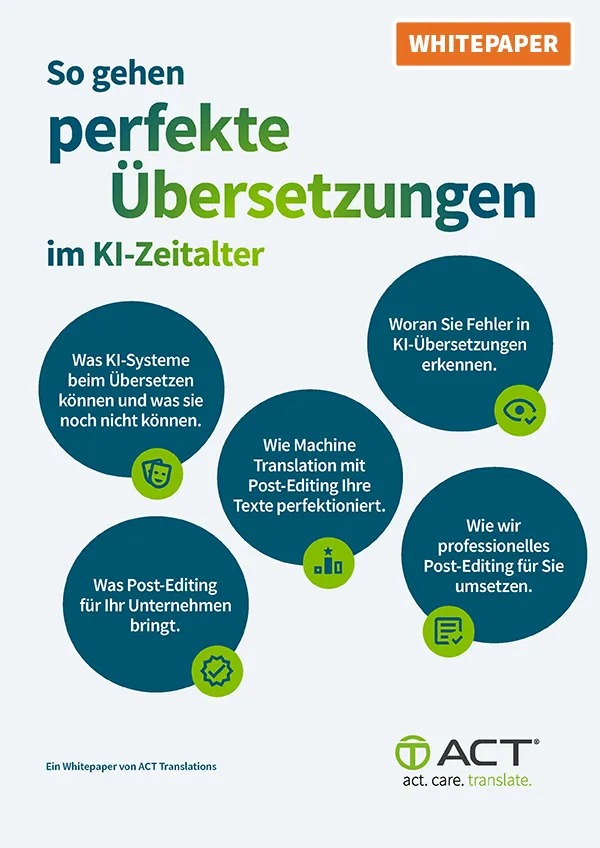Financial communication is subject to strict regulations, which also vary from country to country. Investor relations documents are expected to simultaneously establish trust and transparency in every language and every market. This combination makes translating them both complex and exciting.
Boring? No way! Investor relations is one of the most diverse communication disciplines. And it goes far beyond dreary columns of numbers.
This is mainly attributable to the abundant and highly diverse target audiences. Investor relations material is aimed at institutional investors and private investors. It reaches analysts and rating agencies. Regulatory bodies and supervisory authorities are just as interested in it as journalists from trade and mass media. And just as importantly, financial communication is also intended for internal stakeholders such as management or various departments within the company.
Financial communication: A surprisingly broad field
The formats and channels are correspondingly diverse. Although information and hard facts are always the main focus, the standard financial reports, consolidated financial statements, and ad hoc announcements are usually reinforced with presentations, fact sheets, and informational videos. The press and the annual general meeting want to be updated based on their specific needs. The blogs on the company website also follow their own rules; and then there are FAQs, equity stories, and sustainability reports.
Put simply, the field is broad and diverse. And the same applies to translation.
Translation also means compliance with legal regulations
Part of this diversity arises from the different accounting standards. There are significant formal differences between the two most important standards: IFRS, which is used worldwide, and US GAAP, which is primarily used in the US. There are also different levels of flexibility and plenty of room for interpretation. Therefore, to avoid inadvertently violating any regulations, translators must not only have linguistic proficiency. They must also possess a thorough understanding of the relevant legal background. Accuracy and precision are of crucial importance here. The cost of mistakes in this area, both financially and in terms of the company’s reputation, cannot be overstated. Financial reports and the corresponding sections in other formats must therefore be meticulously scrutinized by the client and the specialized translation agency.
A world of its own: Financial communication and terminology
Every field has its own technical terms, and translators need to know them like the back of their hand. Even within the German-speaking part of the world, some financial terms have different meanings, which only gets worse when it comes to translating texts from German to English. In this scenario, a translation that is correctly interpreted according to the dictionary can quickly miss the mark. Instead, professionals need to know the exact equivalents with the correct meaning in the respective target language. This requires a great deal of experience. But technology can also help here.
How technology supports financial translations
The most important tools for professional translations include term banks and translation memories. Both should be standard. In a term bank, individual terms are assigned their exact translations in the target language, which comply with the applicable guidelines. Notably, the term bank is not a standard dictionary, but rather a customer-specific system. For example, if the corporate language deviates from what is otherwise customary in the respective field, the term bank is adapted accordingly. Additions and updates are possible at any time; and if the client already has a corresponding glossary, good service providers will integrate it into their processes.
With translation memory (TM), consistency is the most important factor. A TM is a bilingual translation database that stores previously translated sentences and phrases for a client along with their respective translations. Whenever a sentence or fragment reoccurs in a subsequent project, the TM makes a corresponding translation suggestion, which can of course be adapted depending on the context. While the term bank is also used for pure financial reports, the translation memory is particularly effective for more extensive document types such as annual reports.
Does artificial intelligence play a role in financial translation?
The performance of AI-based translation tools is undoubtedly impressive. However, when it comes to translating financial reports or similarly data-rich aspects of investor relations, they must be left out of the equation. Machine translation is generally conceivable when it comes to storytelling in annual reports or continuous text in press releases. However, AI is neither able to take corporate wording into account, nor can it question the content of the source text or seamlessly incorporate ongoing changes into the context. In financial communication, the combination of human translation, proofreading, strict quality control, and additional customer review therefore remains the benchmark for quality.
Financial documents are much more than just numbers
Of course, the primary purpose of investor relations is to provide investors and stakeholders with clear and transparent information about financial data. But there is a more far-reaching objective: Financial communication also influences confidence. It elicits the image that the public has of the company and is therefore always a strategic component of corporate communications—and a powerful marketing tool. This is particularly evident in annual reports, where companies often go all out to put the straightforward information into context and to embellish it with cutting-edge texts and images.
The precise translation of multilingual financial texts must always take this aspect into account. What is the customary tone in the target culture? How formal or casual should the documents be? How do you address journalists in the target country, and what level of detail is appropriate? Knowing these “soft” factors is also an essential requirement for professional translation service providers.
10 questions to help you find a financial sector service provider you can trust
Translating investor relations material is a job for true professionals. To identify them among the vast amount of providers out there, it helps to ask them the following questions.
- Can you demonstrate experience and specialist skills in this field and provide us with specific references?
- Can you demonstrate knowledge of the regulatory requirements in our target area?
- What certifications do you have?
- How do you ensure confidentiality, data security, and compliance with the GDPR?
- What technologies do you use for translations?
- What processes and workflows will you use to process our documents?
- Are your employees native speakers?
- How good are your buffers when short-term changes are necessary?
- Are your employees also proficient in localization and transcreation?
- Can you offer us a sample translation?




